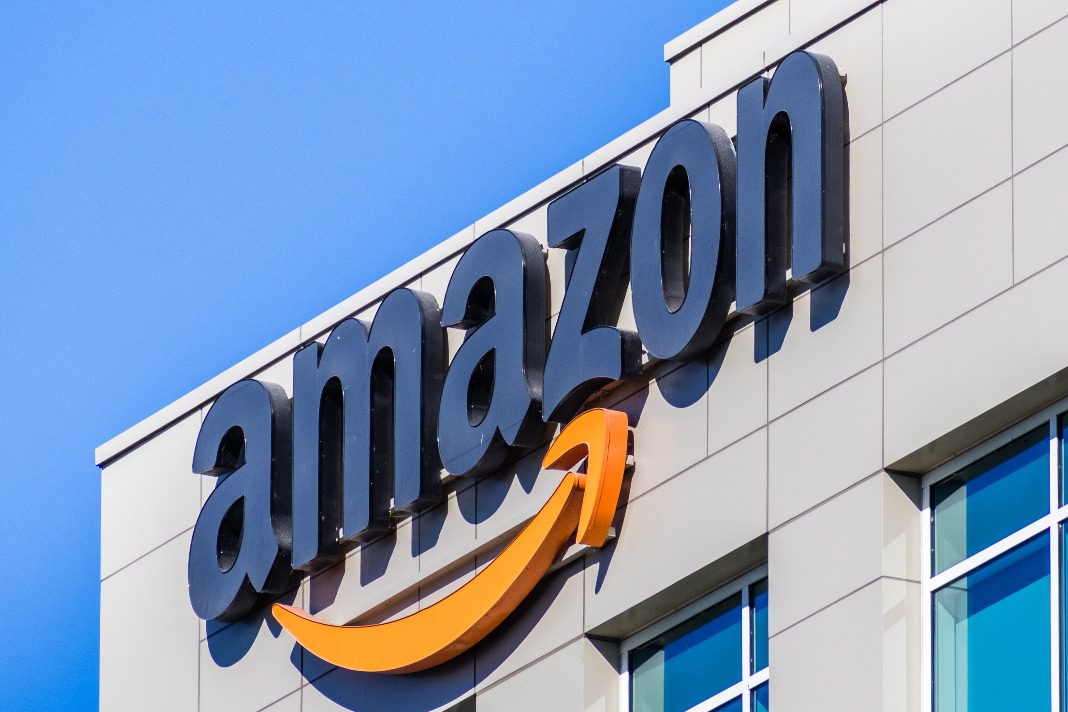
 It seems that Jeff Bezos is stepping down at the perfect time. Business is booming, revenues are blowing off the roof, and profits are up despite Covid-19 expenses. Amazon will overtake Walmart on gross merchandise sold in 2021; AWS is the dominant provider of cloud computing; advertising now poses a serious challenge to Google and Facebook; and Prime continues to be Amazon’s superglue for customers. Amazon’s new B2B business will likely break $20 billion or even $25 billion this year, while AWS, Marketplace, Advertising, and Prime are all generating operating income of at least $10 billion in 2021. And there are plenty of new opportunities as well – in logistics, in healthcare, in finance and in smart homes powered by Alexa.
It seems that Jeff Bezos is stepping down at the perfect time. Business is booming, revenues are blowing off the roof, and profits are up despite Covid-19 expenses. Amazon will overtake Walmart on gross merchandise sold in 2021; AWS is the dominant provider of cloud computing; advertising now poses a serious challenge to Google and Facebook; and Prime continues to be Amazon’s superglue for customers. Amazon’s new B2B business will likely break $20 billion or even $25 billion this year, while AWS, Marketplace, Advertising, and Prime are all generating operating income of at least $10 billion in 2021. And there are plenty of new opportunities as well – in logistics, in healthcare, in finance and in smart homes powered by Alexa.
So the future is blindingly bright. But Andy Jassy, the new CEO, still has a full plate of major strategic problems to resolve when he officially takes over later this year. Here are the top nine:
1) Stop the bleeding at Amazon Retail. Amazon’s traditional retail market is still growing fast, but the pool of red ink is growing even faster: it reached more than $30 billion in 2019. There are several explanations: delivering cheap items individually is a money loser; it’s very hard to efficiently managing the supply chains for many millions of items; the Amazon Marketplace is filled with formidable challengers in niche markets, who use Amazon’s tools and Amazon’s customers against it; and encouraging Chinese manufacturers to sell directly on the Marketplace disintermediated Amazon itself: here Amazon is the middleman being replaced by more efficient connections between manufacturers and customers. Jassy will likely have to take a hatchet to this segment. That’s not easy when it’s the flagship of your entire brand.
2) Cut delivery costs. Shipping and fulfillment have been rising steadily since at least 2014 as a share of overall reviews. By 2019 they reached 29%, and the push into one-day delivery plus the pandemic likely increased that share still further. While Marketplace merchants do cover their shipping costs, that’s not true of Amazon Retail. Amazon’s private label brands mostly sell low-priced items like batteries, computer widgets and cheap clothing, and that exacerbates the shipping burden. There are ways to cut costs, though. While Amazon is exploring most of them, this will demand Jassy’s attention.
3) Solve problems in the Marketplace. Its two million sellers include a lot of bad actors, and its reputation has suffered. A few fixes have worked, but others haven’t; some backfired by sweeping up legitimate sellers in a Kafkaesque nightmare. Top management needs to prioritize this area and add significant resources because both sellers and customers will leave if the Marketplace turns into a den of thieves policed by thugs.
4) Exit groceries. Amazon seems to be doubling down on its groceries bet. Jassy should be sure to re-read the 2006 letter to shareholders. In it, Bezos said: “I often get asked, ‘When are you going to open physical stores?’ That’s an expansion opportunity we’ve resisted. It fails all but one of the tests outlined above. The potential size of a network of physical stores is exciting. However: we don’t know how to do it with low capital and high returns; physical-world retailing is a cagey and ancient business that’s already well served; and we don’t have any ideas for how to build a physical world store experience that’s meaningfully differentiated for customers.” Bezos was right in 2005: every one of his objections still holds. Maybe Jassy, as an executive from outside retail, can steer Amazon away from this quagmire.
5) Make the case for Alexa. Alexa is a platform in search of a compelling application. It has more than 100,000 skills, of which only a handful are used. Home security and healthcare seem to be the key avenues moving forward, but both have plenty of pitfalls. Amazon needs to find applications that resonate enough that customers will pay for them. There are 10,000 people at Amazon working on Alexa and related devices. That’s not cheap.
6) Balancing advertising revenues against user experience. Amazon has over the past few years become a major player in digital advertising. It discovered that once advertising was permitted on the Marketplace, that almost immediately became compulsory for all sellers. Which in turn generated enormous revenues, massive profit margins (83% in 2019), and tremendous opportunity. However, stuffing ever greater numbers of ads into search result pages and product pages has significantly degraded the user experience. With further deterioration, Amazon risks its brand, which relies heavily on consumer trust: Amazon needs to present the best choices – not the best ads.
7) Fix and then automate the warehouses. At the back of many negative stories about Amazon lie the warehouses. Trying to turn humans into robot is always likely to end badly. Many stories emerging from the warehouses are bad, but Amazon has so far – with characteristic arrogance – responded with irrelevant stats and bland corporate PR. The warehouses will remain a thorn in Amazon’s side, and absent regulatory pressure it seems unlikely that Amazon will address the root causes of its problems there. But Amazon does plan to automate the warehouses, likely within 7-10 years. Jassy, with his AWS background, may be well placed to accelerate that process.
8) Amazon outside the US. Aside from the UK, Germany, and to a lesser degree France, where Amazon has had success based on being the first mover, international has been a continuing disappointment for Amazon. It got chased out of China and is struggling in India (its key strategic target), where even the Marketplace is losing money, and where national defenses against foreign firms are increasingly important. AWS has been a global success, but the rest of Amazon has not. So Jassy needs to take a hard look, and decide which of Amazon’s international adventures are worth it. Poland may be a test case, as Amazon is entering a country where there is already a well established digital retail champion.
9) Prepare for more regulation. Bezos got pretty much a free ride on the regulatory front, but that’s ending. Both Congressional action and antitrust enforcement are ramping up. It’s certainly true that Amazon is better placed to push back than the rest of the Big Tech companies, as each has clear vulnerabilities. But Jassy needs to decide what he needs to defend and what he can let go; Amazon’s previous strategy of secrecy plus bland denials won’t be enough.
Beyond these nine challenges, Jassy also needs to help Amazon scale entry into new sectors. The boundaries of Amazon today will not its boundaries tomorrow. Retaining forward momentum is a key strategic objective, so Amazon is clearly on the hunt for new targets. Over the past five years it’s developed Amazon Business, which RBC estimated at $18 billion in 2020 and likely more than $30 billion by 2023. Government services is another high value target: Amazon recently signed an agreement to offer services to a coalition of 55,000 government agencies in the US. Amazon will likely double down on healthcare, and on Amazon in the home via Alexa and Ring. All that’s beyond outside the obvious opportunities to further monetize logistics, and to expand Amazon’s existing footprint in finance and in security/surveillance.
Overall, Bezos left Jassy a company stuffed with money-making enterprises, several growing explosively, and plenty of good opportunities. But it’s definitely not all milk and honey. There are some tough decisions ahead as well.




0

1:00 - 5:00 pm
Over 70% of Executives Surveyed Agree: Many Strategic Planning Efforts Lack Systematic Approach Tips for Enhancing Your Strategic Planning Process
Executives expressed frustration with their current strategic planning process. Issues include:
Steve Rutan and Denise Harrison have put together an afternoon workshop that will provide the tools you need to address these concerns. They have worked with hundreds of executives to develop a systematic approach that will enable your team to make better decisions during strategic planning. Steve and Denise will walk you through exercises for prioritizing your lists and steps that will reset and reinvigorate your process. This will be a hands-on workshop that will enable you to think about your business as you use the tools that are being presented. If you are ready for a Strategic Planning tune-up, select this workshop in your registration form. The additional fee of $695 will be added to your total.

2:00 - 5:00 pm
Female leaders face the same issues all leaders do, but they often face additional challenges too. In this peer session, we will facilitate a discussion of best practices and how to overcome common barriers to help women leaders be more effective within and outside their organizations.
Limited space available.

10:30 - 5:00 pm
General’s Retreat at Hermitage Golf Course
Sponsored by UBS
General’s Retreat, built in 1986 with architect Gary Roger Baird, has been voted the “Best Golf Course in Nashville” and is a “must play” when visiting the Nashville, Tennessee area. With the beautiful setting along the Cumberland River, golfers of all capabilities will thoroughly enjoy the golf, scenery and hospitality.
The golf outing fee includes transportation to and from the hotel, greens/cart fees, use of practice facilities, and boxed lunch. The bus will leave the hotel at 10:30 am for a noon shotgun start and return to the hotel after the cocktail reception following the completion of the round.